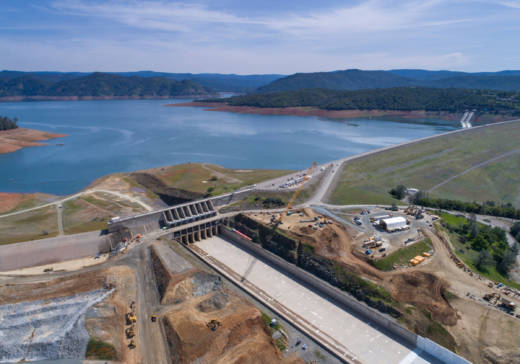We'll have to wait awhile to see how the rebuilt Oroville Dam spillway stands up to water pounding down its 3,000-foot-long concrete chute.
After giving the public a heads-up that the half-repaired structure might be pressed into service because of last week's expected heavy rains, the agency announced Sunday that use of the spillway is now "unlikely."
The extra attention to lake levels grows out of last year's spillway breach -- a near-calamity that triggered mass evacuations and exposed the flood-control outlet's history of poor design, construction and maintenance.
DWR issued last week's advisories after a 50-foot rise in Lake Oroville in the second half of March -- due to a series of storms and dam operators' decision to limit releases from the reservoir to almost nothing.
By early last week, the lake's surface elevation had risen to 793 feet. That was just 20 feet below the sill of the spillway gates and 37 feet below the level that would trigger specially adopted flood-control releases down the spillway.
